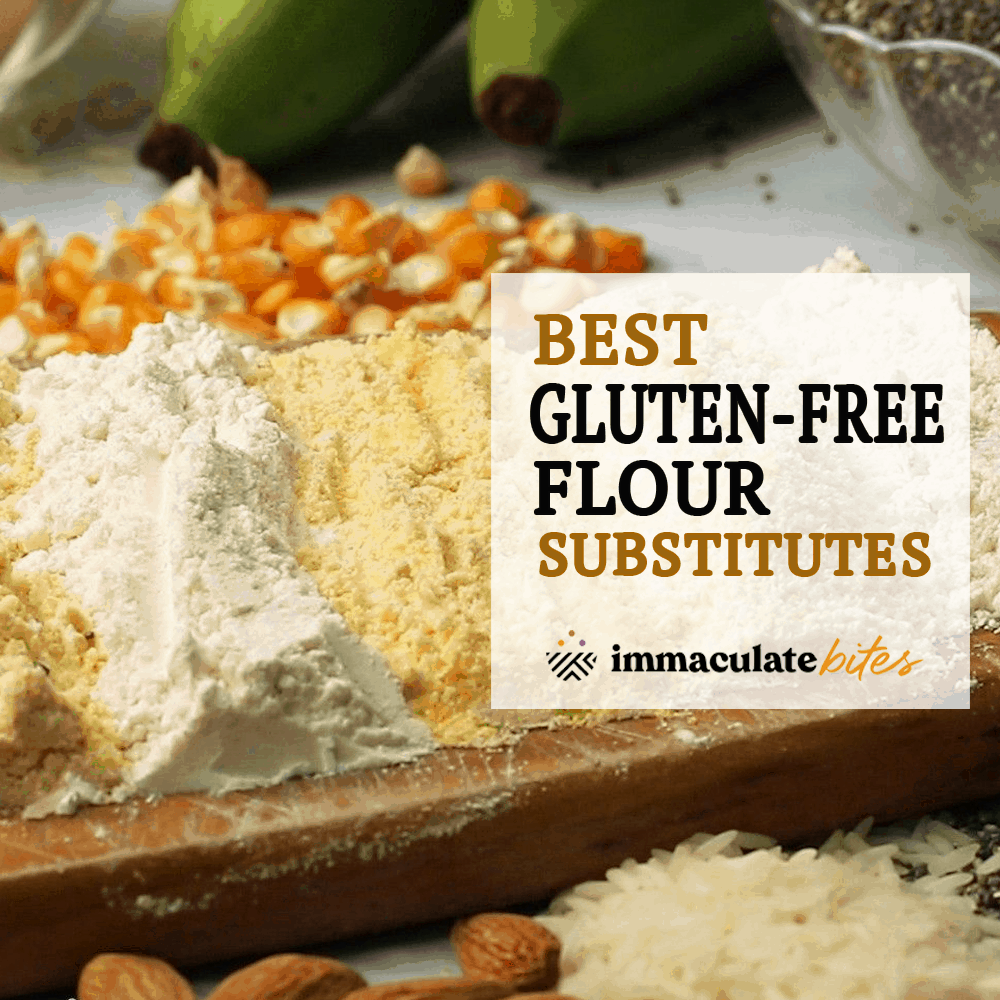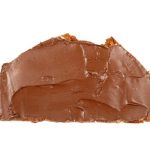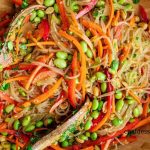Millet flour is a gluten-free alternative to all-purpose flour and has a higher fiber content than wheat. It is full of soluble fiber, which can lower cholesterol levels and reduce the risk of heart disease.
Millet is also a good source of magnesium, which may prevent heart failure. With its subtle flavor and creamy color, millet flour is a versatile ingredient that can enhance a variety of recipes. Additionally, millet flour is a suitable option for those looking to lose weight due to its high fiber content.
It can be used as a substitute for all-purpose flour in baking and cooking.
Introduction To Millet Flour
Millet Flour, known for its subtle flavor, is a stone ground and whole grain flour that adds a beautiful creamy color to baked goods. It is rich in vitamins and minerals, making it a healthy alternative to all-purpose flour.
What Is Millet Flour?
Millet flour is a versatile and nutritious alternative to traditional wheat flour. It is made from grinding millet grains, a group of small, round grains that belong to the grass family. Millet flour has a mild, nutty flavor and a creamy color, which adds a delightful twist to various baked goods.
Health Benefits Of Millet Flour
Millet flour offers numerous health benefits that make it a popular choice among health-conscious individuals. Here are some key benefits:
- Promotes heart health: Millet flour is rich in soluble fiber, which helps reduce the cholesterol levels in your blood and lower the risk of heart disease like atherosclerosis. Additionally, it contains high amounts of magnesium, a mineral that plays a vital role in preventing heart failure.
- Gut health support: The soluble fiber present in millet flour acts as a prebiotic, nourishing the beneficial bacteria in your gut. This can improve digestion and promote a healthy gut microbiome, leading to better overall digestive health.
- Gluten-free nature: Millet flour is naturally gluten-free, making it an excellent choice for people with gluten intolerance or celiac disease. It provides a safe and delicious alternative to wheat flour in gluten-free baking recipes.
- Nutrient-dense: Millet is packed with essential vitamins and minerals, including iron, magnesium, phosphorus, and B vitamins. Incorporating millet flour into your diet can help meet your nutritional needs and support overall health and vitality.
- Weight management: Millet flour is low in calories and has a lower glycemic index compared to refined wheat flour. This makes it a smart choice for individuals looking to manage their weight or control blood sugar levels.
Overall, millet flour is a nutritious, gluten-free option with a range of health benefits. Its versatility and mild flavor make it a fantastic ingredient to incorporate into your favorite recipes.
If you’re interested in exploring the world of millet flour and discovering exciting recipes, stay tuned for our upcoming blog posts!

Recipes With Millet Flour
Millet flour, known for its subtle flavor and creamy color, is a versatile ingredient that can enhance a variety of recipes. It’s gluten-free, rich in vitamins and minerals, and can be used as a substitute for all-purpose flour in your favorite dishes.
Discover the benefits and try out some delicious millet flour recipes today!
Millet Flour Pancakes Recipe
Looking for a delicious and nutritious breakfast option? Try these mouthwatering millet flour pancakes! Packed with flavor and easy to make, these pancakes are a great way to incorporate millet flour into your diet.
To make these pancakes, you’ll need the following ingredients:
– 1 cup of millet flour
– 1 tablespoon of coconut sugar
– 1 teaspoon of baking powder
– 1/2 teaspoon of ground cinnamon
– 1/4 teaspoon of salt
– 1 cup of plant-based milk
– 1 tablespoon of melted butter or coconut oil
– 1 teaspoon of vanilla extract
– Maple syrup, fresh fruits, or your favorite toppings for serving
Here’s how you can make these delicious pancakes in just a few simple steps:
1. In a large mixing bowl, whisk together the millet flour, coconut sugar, baking powder, ground cinnamon, and salt.
2. In a separate bowl, combine the plant-based milk, melted butter or coconut oil, and vanilla extract.
3. Pour the wet ingredients into the dry ingredients and stir until just combined. Be careful not to overmix, as this can make the pancakes tough.
4. Heat a non-stick skillet or griddle over medium heat. Spoon about 1/4 cup of batter onto the skillet for each pancake.
5. Cook the pancakes for 2-3 minutes on each side, or until golden brown.
6. Serve the pancakes with maple syrup, fresh fruits, or your favorite toppings. Enjoy!
These millet flour pancakes are not only gluten-free but also full of nutrients. Millet flour is rich in fiber, vitamins, and minerals, making it a great choice for those looking to add more nutritional value to their meals.
Gluten-free Roti Recipe
If you’re following a gluten-free diet and missing your favorite flatbreads, this gluten-free roti recipe is for you. Made with millet flour, these rotis are soft, flavorful, and perfect for enjoying with your favorite curries or as a wrap.
To make these gluten-free rotis, you’ll need the following ingredients:
– 2 cups of millet flour
– 1/2 teaspoon of salt
– Warm water, as needed
– Ghee or oil, for cooking
Here’s how you can make these gluten-free rotis:
1. In a mixing bowl, combine the millet flour and salt.
2. Gradually add warm water to the flour mixture, kneading the dough until it becomes soft and pliable. Add water as needed to achieve the desired consistency.
3. Divide the dough into small balls, about the size of a golf ball.
4. Roll each ball into a flat round shape, using a rolling pin and some extra millet flour to prevent sticking.
5. Heat a skillet or tawa over medium heat and grease it with ghee or oil.
6. Carefully place the rolled roti onto the hot skillet and cook for a minute on each side, or until golden brown spots appear.
7. Repeat the process with the remaining dough balls.
Serve the gluten-free rotis with your favorite curries or use them as a wrap for a healthy and delicious meal. These rotis are not only gluten-free but also a great source of fiber and essential nutrients.
Now that you have these two amazing recipes with millet flour, you can enjoy the goodness of this nutritious ingredient in your meals. Whether you’re making fluffy pancakes or soft rotis, millet flour adds a unique flavor and texture that will have you coming back for more. Try these recipes today and experience the versatility of millet flour for yourself!
Nutritional Value Of Millet Flour
Millet flour is not only a versatile and gluten-free alternative to traditional wheat flour, but it also offers a range of nutritional benefits. Packed with vitamins, minerals, and fiber, millet flour provides a healthy addition to your diet. Let’s explore the nutritional value of millet flour in detail.
Vitamins And Minerals In Millet Flour
Millet flour is rich in essential vitamins and minerals that promote overall health and well-being. Here’s a breakdown of the key nutrients found in millet flour:
- Vitamin B: Millet flour is a good source of various B vitamins, including niacin, thiamine, and riboflavin. These vitamins play a crucial role in energy production, metabolism, and maintaining healthy brain function.
- Iron: Millet flour contains iron, which is important for carrying oxygen to the body’s cells and aids in the production of red blood cells. Consuming millet flour can help prevent iron deficiency anemia.
- Magnesium: Magnesium is abundant in millet flour. This mineral supports bone health, regulates blood pressure, and assists in nerve function. Including millet flour in your diet can help meet your daily magnesium requirements.
- Phosphorus: Millet flour is a good source of phosphorus, which is necessary for the formation and maintenance of healthy bones and teeth. It also contributes to proper kidney function and energy production.
- Zinc: Millet flour contains zinc, an essential mineral that plays a vital role in supporting the immune system, promoting wound healing, and optimizing cell growth and division.
Fiber Content In Millet Flour
Fiber is an important component of a healthy diet, and millet flour offers a generous amount of dietary fiber. Including millet flour in your meals can help improve digestion, regulate blood sugar levels, and contribute to weight management. Here are some benefits of the fiber content in millet flour:
- Improved Digestion: The high fiber content in millet flour promotes healthy digestion by adding bulk to the stool and preventing constipation. It also supports a healthy gut microbiome.
- Blood Sugar Regulation: The fiber in millet flour slows down the absorption of glucose in the bloodstream, preventing sudden spikes and dips in blood sugar levels. This can be beneficial for individuals with diabetes or those aiming to manage their blood sugar levels.
- Weight Management: Including millet flour in your diet can contribute to weight management efforts. The fiber keeps you feeling fuller for longer, reducing the temptation to overeat or snack between meals.

Substituting Millet Flour
Substituting millet flour for all-purpose flour is a healthier option, as millet is packed with fiber and lower in cholesterol. It adds a subtle flavor and creamy color to baked goods, making it a great alternative for those looking to reduce their wheat intake.
Replacing All-purpose Flour With Millet Flour
If you’re looking to make your baked goods healthier and gluten-free, substituting all-purpose flour with millet flour can be a great option. Millet flour is a nutritious and versatile alternative that adds a lovely creamy color and subtle flavor to your favorite recipes.
Here’s how you can easily replace all-purpose flour with millet flour:
- Measurements: When substituting, use the same amount of millet flour as the all-purpose flour called for in the recipe.
- Texture: Keep in mind that millet flour has a slightly different texture compared to all-purpose flour. It tends to be coarser and may result in a denser finished product. To counter this, you can combine millet flour with other gluten-free flours like rice flour or tapioca flour in equal proportions to achieve a lighter texture.
- Binder: As millet flour doesn’t contain gluten, which provides structure and elasticity to baked goods, you may need to add a binder like xanthan gum or psyllium husk powder. These ingredients help mimic the properties of gluten and enhance the texture of your baked goods. Use approximately 1/2 teaspoon of xanthan gum or 1 tablespoon of psyllium husk powder per cup of millet flour.
- Hydration: Millet flour absorbs less liquid than all-purpose flour, so you may need to adjust the wet ingredients in your recipe. Start by reducing the liquid by about 25% and gradually add more if needed until you achieve the desired consistency of the batter or dough.
- Flavor: Millet flour has a mild, nutty flavor that complements a variety of dishes. However, if you prefer a more neutral taste, you can mix it with other gluten-free flours like brown rice flour or sorghum flour.
By following these simple tips, you can successfully substitute all-purpose flour with millet flour in your favorite recipes. Enjoy the benefits of a healthier gluten-free alternative without compromising on flavor and texture!
Where To Buy Millet Flour
Looking for where to buy millet flour? Look no further! Bob’s Red Mill offers stone ground, whole grain millet flour with lots of vitamins and minerals. Available on iHerb, Amazon, and Vitacost. It’s perfect for adding a lovely creamy color and subtle flavor to your baked goods.
If you’re looking to incorporate the nutrient-rich goodness of millet flour into your baking or cooking, you may be wondering where to buy it. Luckily, there are several options available both online and at local stores. Let’s explore the different places where you can purchase millet flour.
Online Stores
If convenience is key for you, online stores offer a wide variety of millet flour options. Here are some popular online stores where you can easily find millet flour:
| Store | Price |
|---|---|
| iHerb | $3.45 |
| Amazon.com | $10.53 |
| Vitacost.com | $4.19 |
| The African Market | $3.00 |
| Azure Standard Azure Market Organics | $4.33 |
| Jules Afri Market African Flavours | $7.99 |
| Food to Live | $8.99 |
| Nuts.com | $19.35 |
| ZooScape LLC (Walmart) | $6.27 |
These online stores provide a wide range of millet flour options, allowing you to choose the brand and quantity that suits your needs. It’s always a good idea to check customer reviews for any product before making a purchase.
Local Stores
If you prefer the traditional shopping experience or want to support local businesses, you can also find millet flour at several local stores. Here are some places to check:
- Bob’s Red Mill Millet Flour – $9.36
- Arrowhead Mills Flour Millet Organic – $14.45
- Bob’s Red Mill Millet Whole Grain – $9.17
- Ashery Country Store – Gluten-Free Millet Flour – $2.69
- Bob’s Red Mill Gluten-Free Millet Flour – $45.99
- Bgreen Food Organic Millet Flour – $4.99
- Swad Ragi Flour – $25.99
These local stores offer the convenience of being able to see and touch the product before purchasing. Additionally, some stores may carry specialty millet flour varieties or brands that are not available online.
Now that you know where to buy millet flour, you can easily add this nutritious and versatile ingredient to your pantry. Whether you choose to shop online or support local stores, millet flour is a great addition to your culinary adventures. Enjoy the benefits of millet flour in your favorite recipes!
Frequently Asked Questions On Millet Flour
What Is Millet Flour Good For?
Millet flour is good for your health as it is high in fiber, which can lower cholesterol and reduce the risk of heart disease. It also contains magnesium, which supports heart health. Millets are a great alternative to wheat for weight loss due to their higher fiber content.
Additionally, millet flour is gluten-free.
Is Millet Flour Better Than Wheat?
Millet flour is better than wheat as it has higher fiber content and lower cholesterol and blood sugar levels. It is also six times richer in fiber than wheat, making it ideal for weight loss. Millet is gluten-free and can be used as a substitute for all-purpose flour.
Can You Replace All-purpose Flour With Millet Flour?
Yes, you can replace all-purpose flour with millet flour. Millet flour is a gluten-free alternative and can be used in various dishes. It has a subtle flavor and adds a lovely creamy color to baked goods. Millet flour is also a good source of fiber and nutrients.
Is There Gluten In Millet Flour?
Yes, millet flour is gluten-free. It is made from small-seeded grasses that are naturally gluten-free and can be used in a variety of dishes.
Conclusion
Millet flour is a versatile and nutritious option for baking and cooking. With its subtle flavor and creamy color, it adds a unique twist to your favorite recipes. Not only is millet flour gluten-free, but it is also packed with vitamins, minerals, and fiber.
Incorporating millet flour into your diet can help lower cholesterol levels, improve heart health, and aid in weight loss. So, give millet flour a try and enjoy its numerous health benefits while enhancing the taste and texture of your dishes.




